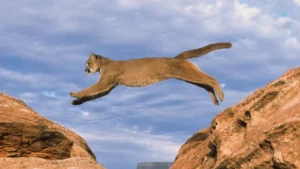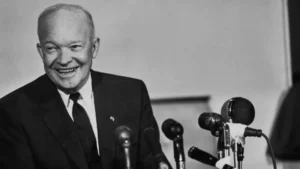Mountain Lions Are Not Leaving Yellowstone For Utah, Despite Popular Video’s Claim

In July 2025, Scott Whitehead, a man who described himself as an “animal expert” in his social media bios, posted a video of a pair of mountain lions, also called cougars or pumas, walking in the snow. According to Whitehead, the mountain lions were “mysteriously migrating south from Yellowstone to Utah.”
Internet users viewed the video Whitehead posted to Facebook more than 6.5 million times, while his video on Instagram racked up more than 156,000 likes by the time of this writing.
Many people took Whitehead’s claim seriously. Searches about mountain lions leaving Yellowstone National Park started trending on Google, and an X account with more than 1 million followers reposted it.
However, this was not a video of Yellowstone mountain lions migrating south to Utah. There was no evidence that the park’s small mountain lion population was “mysteriously” leaving the area, either. As a result, we’ve rated the video miscaptioned.
The video first appeared online on May 22, 2025, when a Chilean photographer shared it to Instagram. In the caption, the photographer wrote in Spanish that the video was recorded in Torres del Paine, a national park full of glaciers and mountains in southern Chile. That same account posted other photos and videos of mountain lions from the same region in May and June 2025.
There are mountain lions in Yellowstone, however; the National Park Service estimated on an informational webpage that only 29 to 45 cougars stay in Yellowstone National Park year-round, while some others enter it seasonally — in contrast to the “hundreds” Whitehead claimed were migrating in the video. The mountain lions in the park are “seldom seen,” according to the NPS.
Mountain lions anywhere do migrate and move around. About 99% of young male mountain lions disperse 50 to 400 miles from the place of their birth at about a year and a half old, according to the NPS webpage. Even within Yellowstone, cougars follow their main prey from the higher elevations in the summer to the lower elevations in the winter.
A Google search for “mountain lions leaving Yellowstone” found no mainstream news sources reporting on the apparent migration, even though such publications would surely report on such unusual behavior. Most of the search results were social media posts, fact-checks and sites that cited Whitehead as their source.
We found that the video Whitehead was speaking over was miscaptioned.



